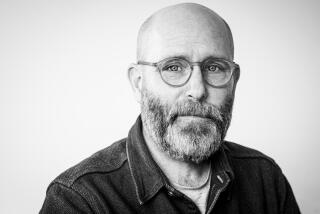Ansel Adams archive enters the fray
- Share via
Breaking a silence it had maintained during a monthlong controversy, the leading archive housing Ansel Adams’ photographs has disputed Rick Norsigian’s claim that old-fashioned glass-plate negatives he bought at a garage sale in Fresno represent a “lost” chapter in the great nature photographer’s career.
“We have no reason to believe that these negatives are, in fact, the work of Ansel Adams,” said the statement issued Tuesday by the Center for Creative Photography at the University of Arizona in Tucson. The statement from its director, Katharine Martinez, also voiced support for a federal lawsuit filed last week by the Ansel Adams Publishing Rights Trust, claiming that Norsigian’s efforts to advertise and sell the pictures as works by Adams violate its trademark rights.
Norsigian’s attorney, Arnold Peter, questioned how the center could “render any opinion without examining Mr. Norsigian’s negatives.”
One member of the Adams publishing rights trust, John P. Schaefer, co-founded the Center for Creative Photography with Adams in 1975, when Schaefer was president of the University of Arizona. Adams’ collection of 44,000 negatives as well as camera equipment and other materials are housed at the center, which also includes archives of Harry Callahan, Edward Weston and many other photographers.
Norsigian, meanwhile, has stamped the equivalent of a buyer-beware sign on the pictures of Yosemite and coastal California he’s trying to sell via his website, rick
norsigian.com. Before customers can order prints priced at $7,500 for a hand-developed one or $1,500 for a digital copy, they must agree to the terms of a legal disclaimer in which Norsigian says he is not legally liable if the prints turn out not to have been taken by Adams.
“The entire risk as to the quality and authenticity of the print … is with the buyer,” the disclaimer says.
Jerome Adamson, a Los Angeles art dealer who is board president of the Art Dealers Assn. of California, began to laugh as the disclaimer was read to him Tuesday.
The commonly accepted practice, he said, is for dealers to sell art they have authenticated and stand behind with a money-back guarantee. If it’s later proved that another artist created the work, Adamson said, the buyer would get a full refund.
The association’s code of ethics says that dealers are obligated to “fully disclose to clients the precise nature of all items to be sold. This includes furnishing in writing the exact conditions of originality or attribution … and other conditions that clearly set forth the exact status of each work.”
Peter said Tuesday that the recently added disclaimer merely certifies what Norsigian has said all along — that the opinion that the negatives were shot by Adams comes only from his own hired experts. Since July 27, when the Norsigian team rolled out its findings at a packed news conference at a gallery in Beverly Hills — along with a headline-grabbing but subsequently dismissed appraisal valuing the cache at $200 million — Norsigian hasn’t managed to convince many outside experts.
The Adams Publishing Rights Trust, along with Adams’ heirs, associates and leading photography dealers, have disputed the claim. Norsigian’s key authenticators, Culver City photographer Patrick Alt and Wyoming-based art consultant Robert C. Moeller III, were unknown to dealers and museum-based photography experts.
The Bay Citizen, an online news operation in San Francisco that feeds reports to the New York Times, reported Monday that Moeller now says he “made a mistake” and that at least some of the Norsigian images were shot by Earl Brooks, a previously unknown photographer who lived in the Fresno area until the 1930s.
Moeller was a curator of European decorative art and sculpture at the Fine Arts Museum of Boston until 1980 and has since become an advisor to art collectors. On Tuesday, he declined a Los Angeles Times request for an interview. Peter said he has talked to Moeller since the report emerged that he had changed his mind, and “he felt he had been misquoted, that statements he’d made were taken out of context and were greatly exaggerated.”
One gap in the Norsigian authentication process has been the lack of any physical comparison between his negatives and known Adams negatives of the same size and type that are in the Tucson archive. Peter said Tuesday that he is trying to get permission from the Center for Creative Photography to allow “independent experts in the forensic examination of photographs” to bring Norsigian negatives to the archive to make comparisons.
Experts have told The Times that while they might not be conclusive, some tests and comparisons could be useful, including whether there are distinctive markings on the plates, or similar patterns of unexposed spots along the negatives’ margins, suggesting they were shot with the same equipment, or at least the same type of equipment.
“They could make a research appointment and come in and do that,” Leslie Calmes, the center associate librarian who supervises the Adams archive, said Tuesday.
mike.boehm@latimes.com
More to Read
The biggest entertainment stories
Get our big stories about Hollywood, film, television, music, arts, culture and more right in your inbox as soon as they publish.
You may occasionally receive promotional content from the Los Angeles Times.











